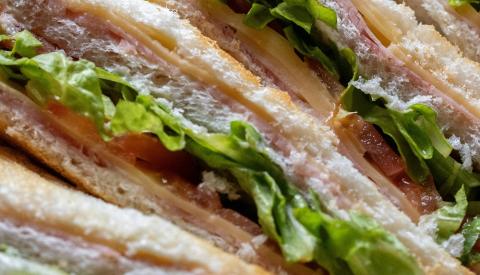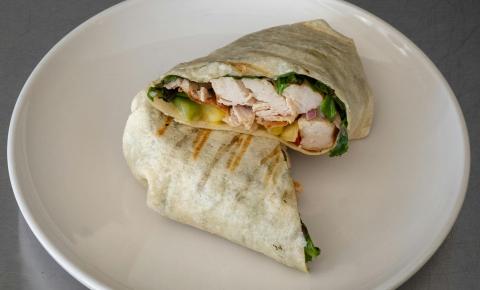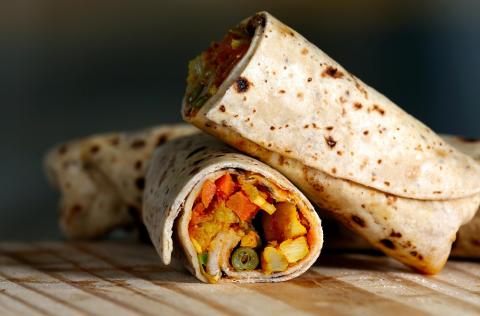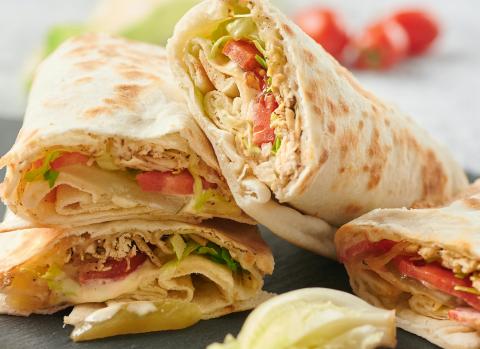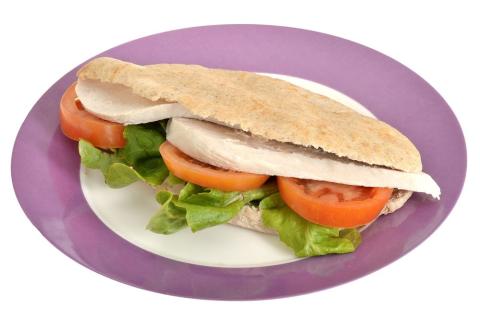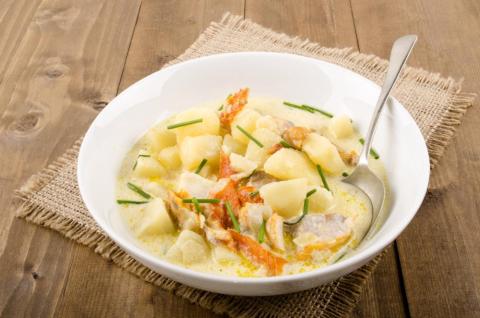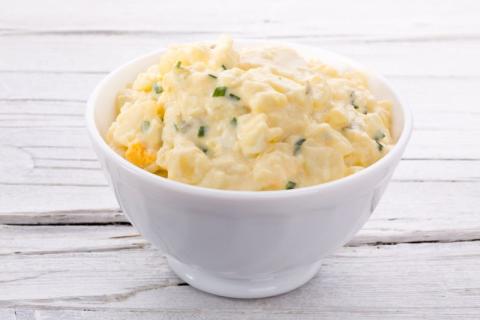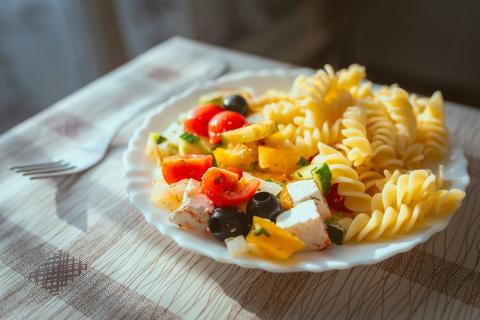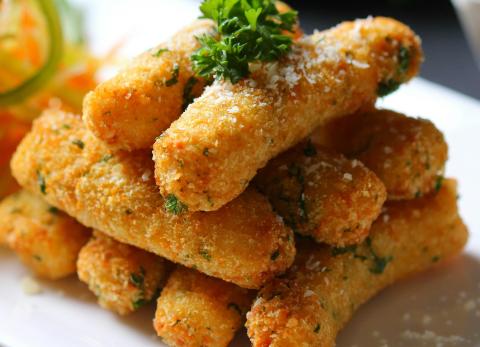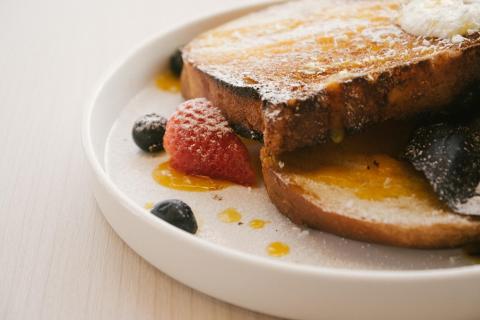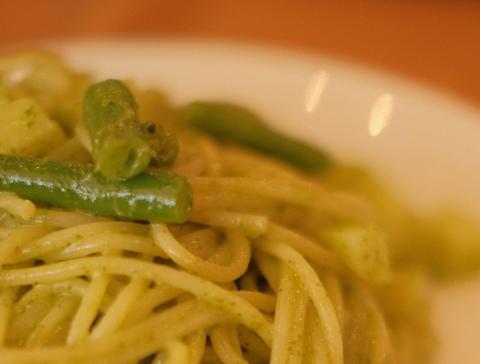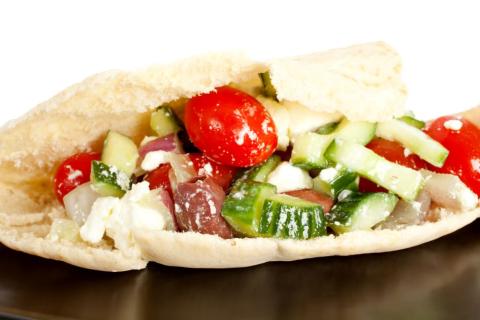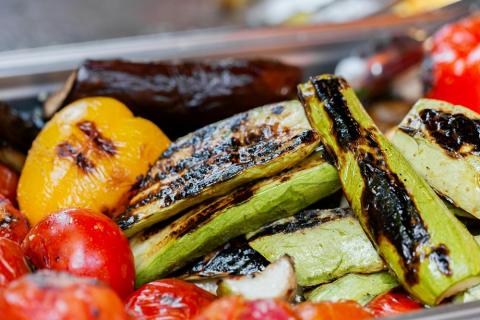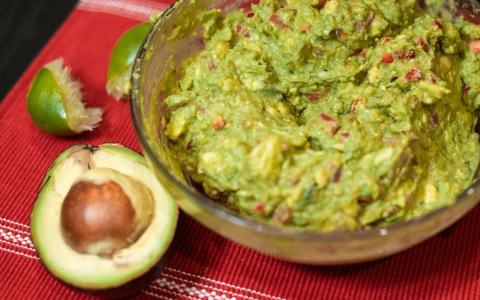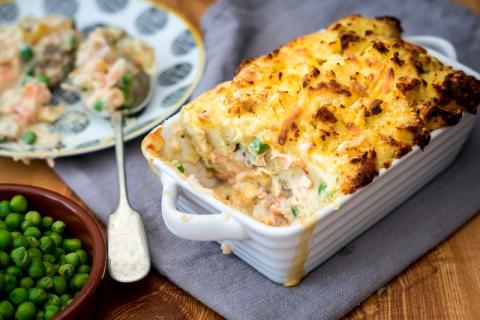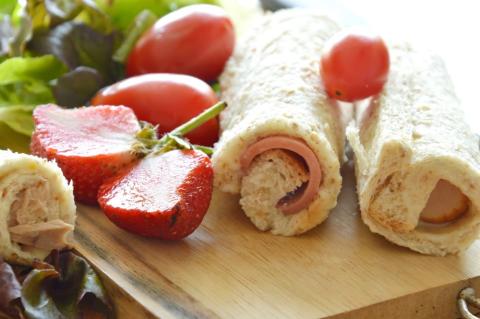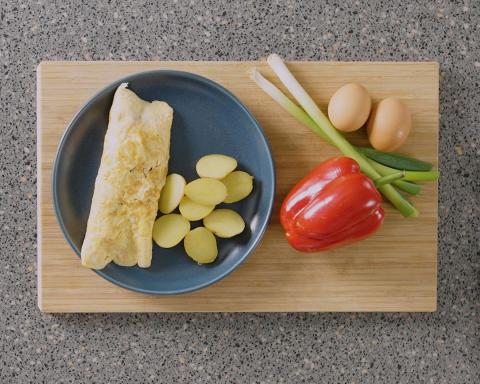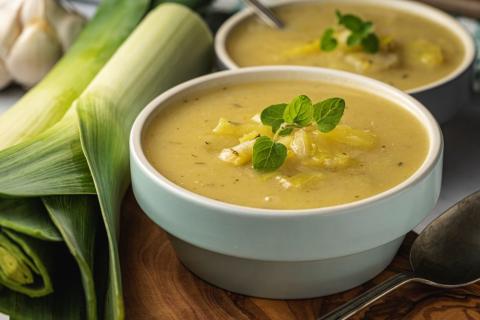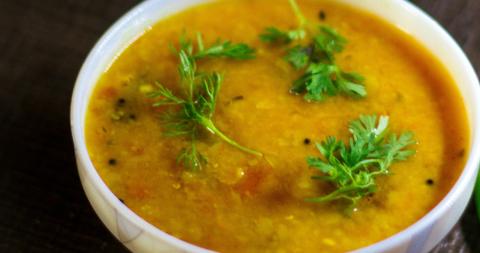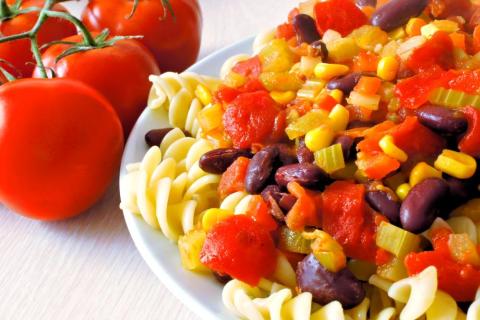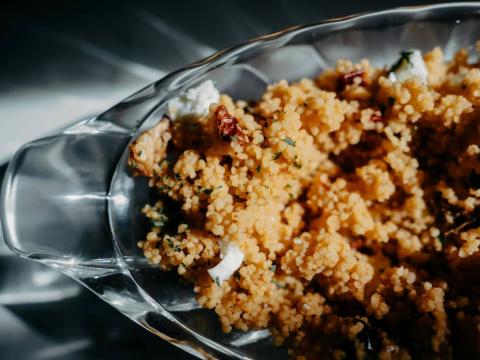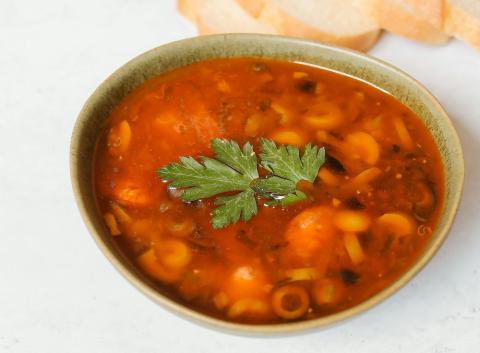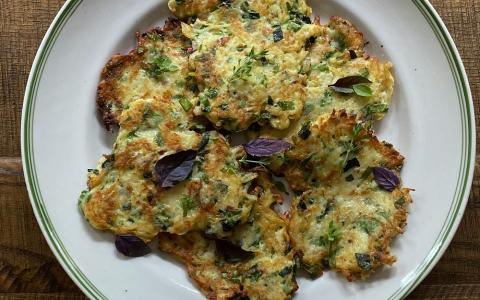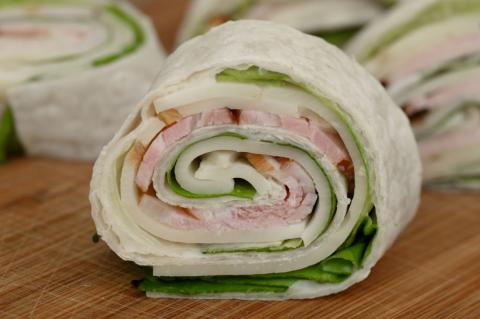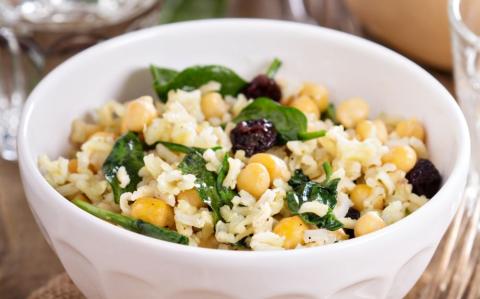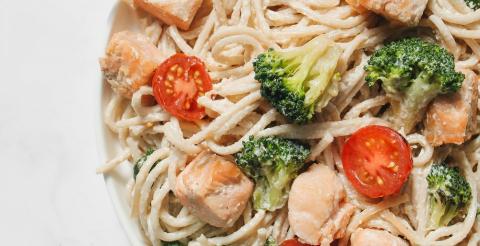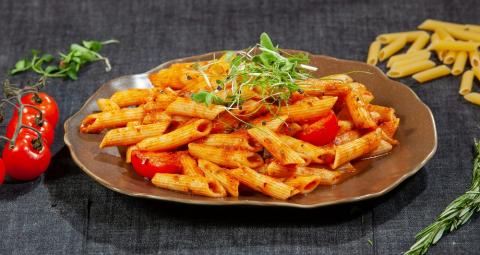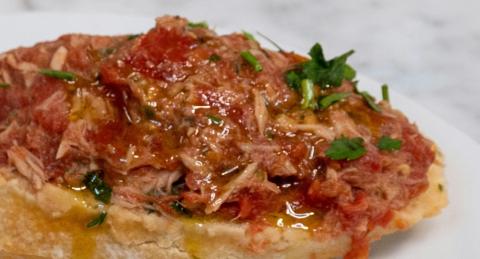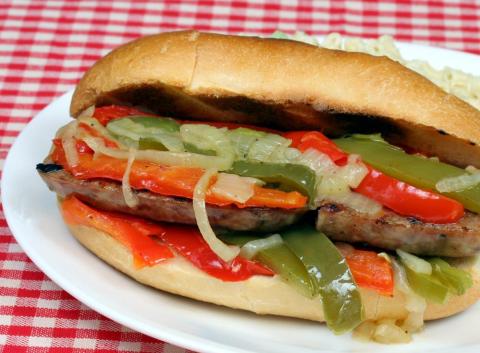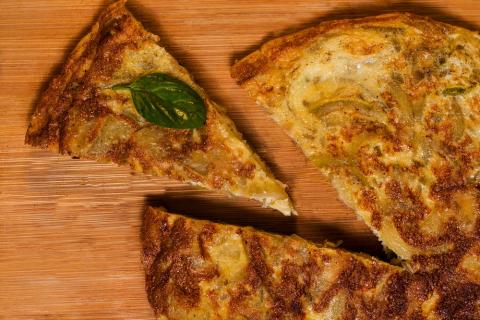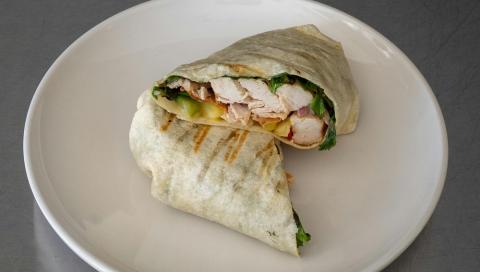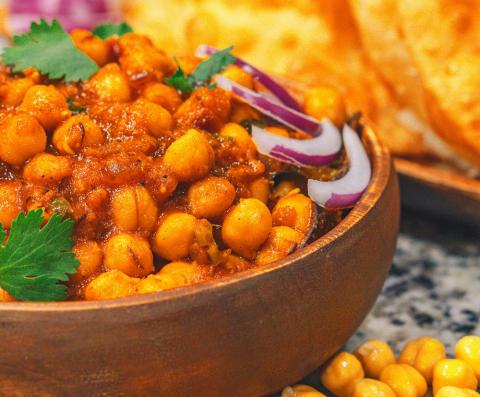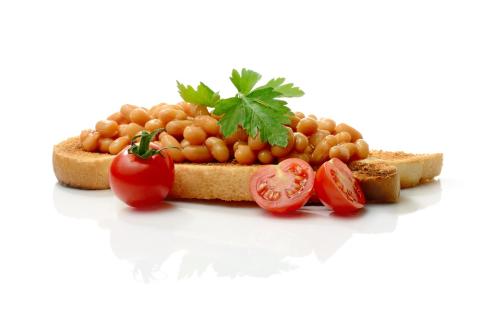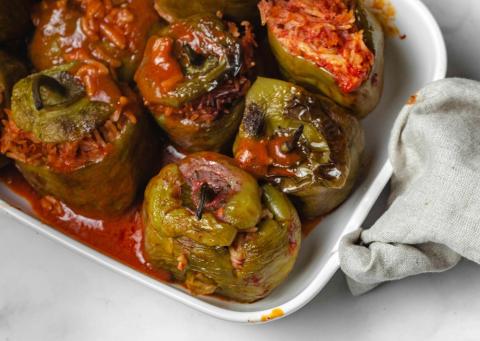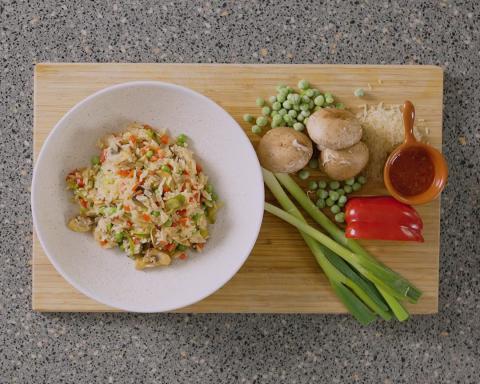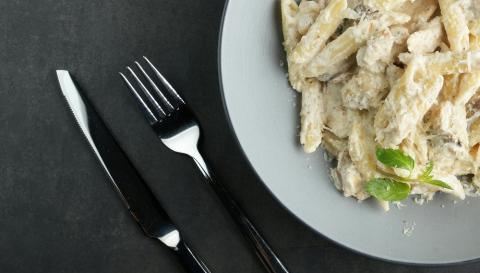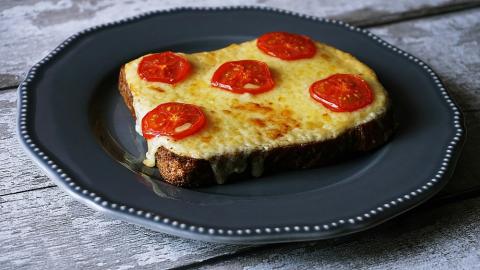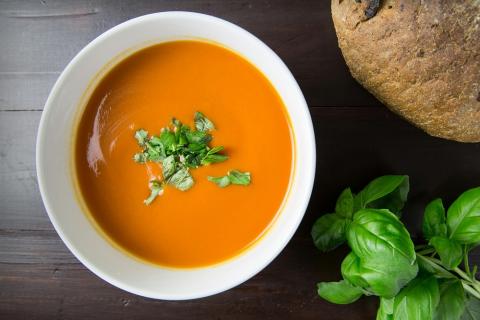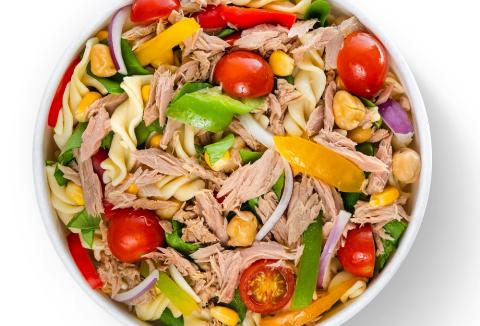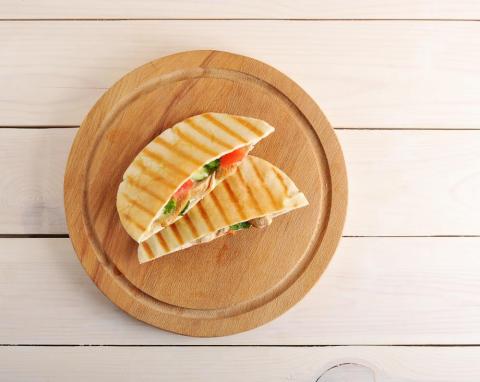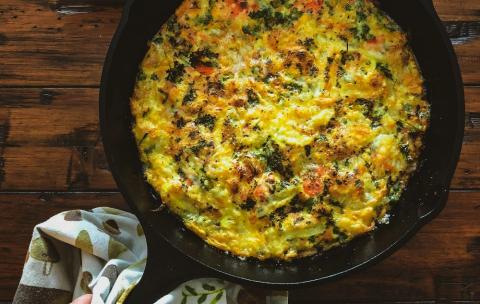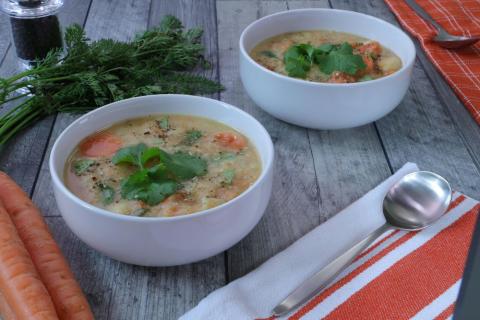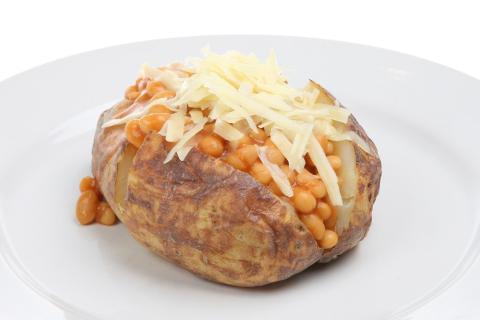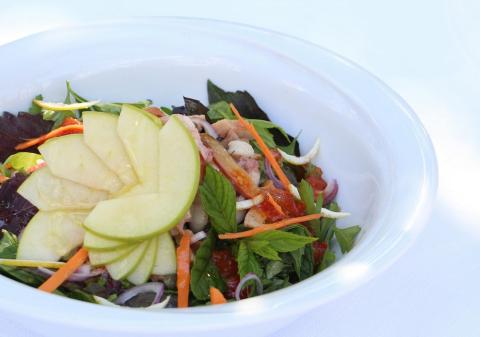- 1 (260g) Aubergine
- 1 Medium sized (100g) Courgette
- 2 (320g) Yellow Peppers
- 12 (120g) Cherry Tomatoes
- 4 (40g) Spring Onions
- 1 Tablespoon (10g) Olive Oil
- 1 Pinch (1g) Ground Black Pepper
- ½ Pack (60g) Fine Asparagus
- 1 (3g) Garlic Clove
- ½ Juiced (10g) Lemon
- 1 For the dressing Tablespoon (10g) Olive Oil
- ½ Large tub Tub (250g) Low Fat Plain Yoghurt
Ingredients
Allergy Disclaimer
Always check the label of each ingredient for allergy warnings.
Method
- Wash the vegetables. Slice the aubergine and courgette into thin strips lengthwise. Deseed and slice the peppers. Cut the tomatoes in half and slice the spring onions
- Brush the vegetabes with a little oil and season with ground black pepper. If you don't have a brush, just use your hands to ensure the vegetables are covered in a thin layer of oil
- Place the aubergine, courgette, peppers and asparagus onto a hot grill pan (or frying pan if you don't have a grill pan) and cook until the vegetables are coloured on both sides and soft
- Add the tomatoes and spring onions and cook for 1 minute until hot
- Peel and finely chop the garlic, and whisk the dressing ingredients together in a bowl. Use a fork if you don't have a whisk
- Place the hot vegetables on a plate and serve the dressing on the side or drizzled over the hot vegetables
Cost Saver Tips
Not all these vegetables need to be used - choose whatever is on offer.
Tips for Kids
The kids can help mix the dressing ingredients together in the bowl. Make this salad as colourful as possible.
Nutritional Information
Based on a single serving of 261g (% of an adult's reference intake)
Energy
131 kcals ( 7 %)
547 kJ ( 7 %)
Fat
1.2 g ( 6 %)
Saturates
11.9 g ( %)
Sugar
11.5 g ( 13 %)
Salt
0.1 g ( 2 %)
Detailed nutritional information
| Per 100g | Per 261g serving | |
|---|---|---|
| Energy Kcals | 50 | 131 |
| Energy Kj | 210 | 547 |
| Protein | 2.3 g | 6.1 g |
| Total Fat | g | g |
| Saturated Fat | 0.5 g | 1.2 g |
| Carbohydrates | 4.6 g | 11.9 g |
| Total Sugars | 4.4 g | 11.5 g |
| NSP Fibre | 1.4 g | 3.7 g |
| Sodium | 23 mg | 59 mg |
| Salt | 0.1 g | 0.1 g |
Find out about nutritional labelling
Nutrition labels on the front of packaging
- Most of the big supermarkets and many food manufacturers display nutritional information on the front of pre-packed food.
- Front of pack nutrition labels provide information on the number of grams of fat, saturated fat, sugars and salt and the amount of energy (in kJ and kcal) in a serving or portion of a recipe.
- The labels also include information about reference intakes (expressed as a percentage) which are guidelines about the approximate amount of particular nutrients and energy required for a healthy diet.
- The colour coding tells you at a glance if the food has high (red), medium (amber) or low (green) amounts of fat, saturated fat, sugars and salt.
- The more greens on the label, the healthier the choice
- Amber means neither high nor low, so you can eat foods with all or mostly ambers on the label most of the time.
- Reds on the label means the food is high in that nutrient and these are the foods we should cut down on. Try to eat these foods less often and in small amounts.
Food shopping tips
If you’re trying to decide which product to choose, check to see if there's a nutrition label on the front of the pack. This will help you to quickly assess how your choices stack up. You will often find a mixture of red, amber and green colour coding for the nutrients. So when you're choosing between similar products, try to go for more greens and ambers and fewer reds if you want to make a healthier choice.
 Activities & Play
Activities & Play Behaviour
Behaviour Childcare
Childcare Development & Growing Up
Development & Growing Up Family, Friends & Relationships
Family, Friends & Relationships Feeding Your Baby
Feeding Your Baby Food & Eating
Food & Eating Health & Safety
Health & Safety Mental Health & Wellbeing
Mental Health & Wellbeing Money & Work
Money & Work Online Behaviour & Safety
Online Behaviour & Safety Pregnancy & First Days
Pregnancy & First Days School & Education
School & Education Sleep
Sleep


